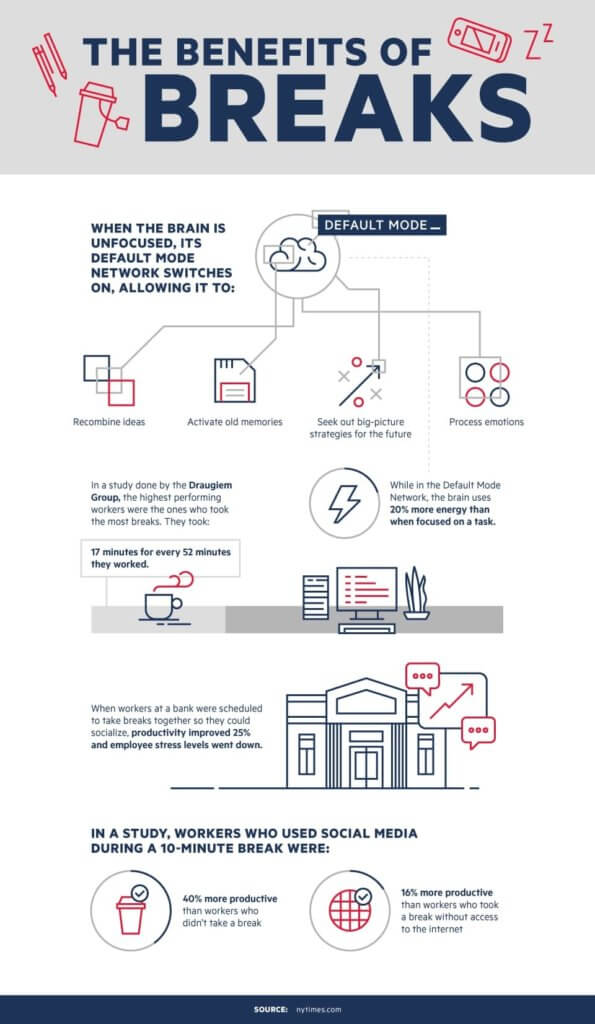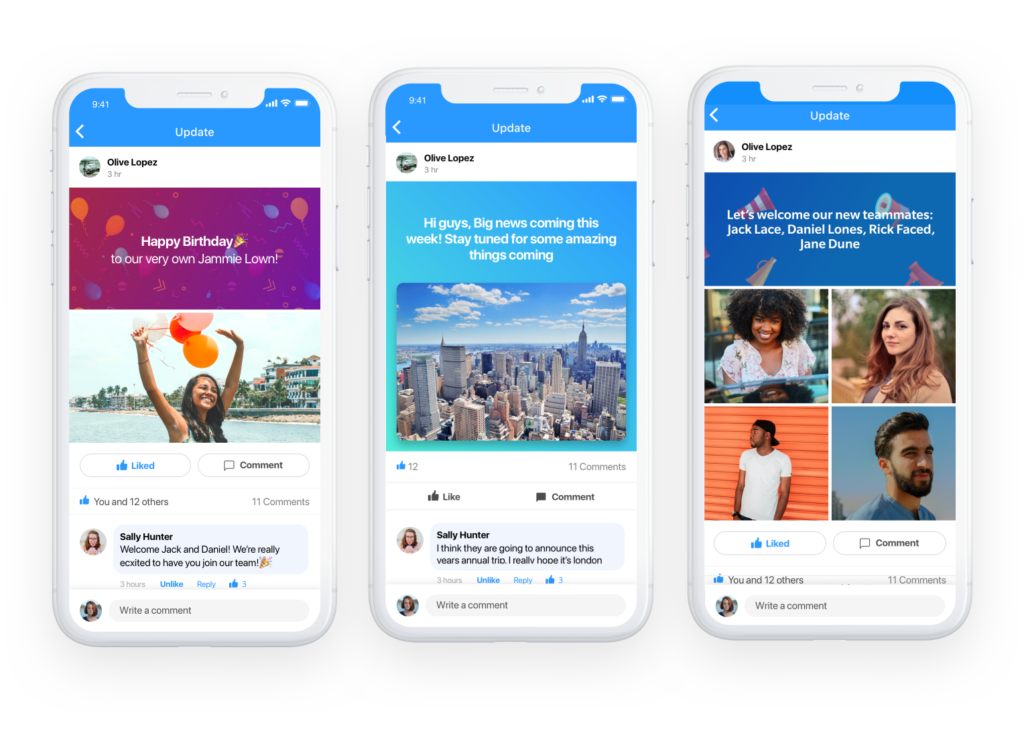Stress at work takes a toll on an employee’s productivity and health, managers must do everything possible to curb burnout and lower stress. Follow these 9 tips to create less stress at work.
I can think of multiple six-letter words that will cause any employee to run for the hills.
But in this case, I’m focused on just one – stress.
The American Institute of Stress found that 46% of employee stress was a direct result of their workload. And to only heighten the concern – coworker concerns came in at 28% while juggling work and personal lives were 6%.
Excessive stress and burnout will cause your employees’ productivity and performance to falter and can even greatly negatively impact their physical and emotional health.
And let’s not forget that burnout and employee stress costs the United States over $300 billion annually! How so? Ah, these numbers are directly from cases of absenteeism, turnover, poor engagement, low productivity, and medical, legal, and insurance costs.
The best managers are not just aware that employee burnout and stress are very real threats to the bottom line, but also to their company culture, their customers, and their employees.
But before we dive into tips on how to make your job less stressful, let’s look at what some common causes of workplace stress are.
- Fear of being laid off
- Staff cutbacks lead to way more overtime
- No control on how to do your own work
- Too much pressure to work at the highest level, all the time
- Too much pressure to meet rising expectations with no increase in job satisfaction
In order to reduce employee stress at work, managers should take the following tips into account and start implementing these strategies as soon as possible.
9 Tips On How to Make Your Job Less Stressful For Your Team
Create A Work Environment That Naturally Lowers Employee Stress
Employees are more likely to move into fight-or-flight mode when they’re put into high-stress situations, such as a hectic workspace, fuzzy expectations, and unrealistic deadlines.
Whenever employees feel threatened, their more emotional and primal part of the brain takes over and this leads to a decrease in making effective, long-term decisions. When employees stay in this mode for too long, they will eventually become burned out.
How can a manager then reduce employee stress at work? You must build a secure and healthy work environment that regularly incorporates stress reduction habits into your employee’s day-to-day operations.
A few easy ways to do this just at the workplace include:
- Add more greenery in the office
- Incorporate brighter colors in the office, from the walls to paintings
- Add a ping pong or foosball table to encourage some fun
- Give everyone a stress ball
No one said creating a calming environment had to cost a fortune or be extravagant.
Encourage Regular Breaks
90-120 minutes. That’s how long our brains can function before needing rest.
Therefore, managers must encourage their employees to take breaks every couple of hours.
Getting up and away from their desk to take a short walk, to stretch, to eat a snack, to scroll on social media, anything that gets them up and away from their desk.

Additionally, if you can, bring in a yoga or pilates instructor once a month. Or subsidize gym memberships or fitness apps. Or bring in a massage therapist or masseuse. Have your employees track their steps and award the month who hit the highest step count once a week or month.
Yes, we know that time is money. However, when your employees can rest their brains and move their body then they have more mental space to execute their job well and consistently.
Private Workstations Can Lower Employee Stress
If you have an open office then expect your employees to be more prone to distractions, increased stress, and decreased productivity. Such a layout has a built-in expectation that team members are always available for impromptu meetings and discussions.
Without private workspaces, your employees don’t have anywhere to go for better focus or decompressing.
Allocate signals like “do not disturb” signs, a designated space, or office employees can schedule for themselves if an open office cannot be changed, or consider scheduling “quiet hours”.
Maybe you can even designate a nap or quiet room – for example, a specific meeting room can double as a get-away room for your team. Have a signup chart so employees can lock in a time that works for them.
Ensure Psychological Safety
If any of your employees perceive the workplace as a threat, then you cannot build the trust that everyone needs in order to collaborate and innovate effectively.
Author Amy Edmondson describes three steps managers can take to build psychological safety:
- Provide your employees with clear goals
- Ensure your team is heard and that you really want their voices to be heard
- Build a work environment that is challenging and unthreatening at the same time. Start by letting your team know that it’s okay to fail, give recognition, and provide feedback on a regular basis
Other ways that you can encourage psychological safety to lead to less stress at work include:
- Promote self-awareness
- Regularly check in with your employeees
- Ask questions and be sure to allow for diverse voices to speak up
- Be appreciative
- Own up to mistakes
- Be transparent when relevant
Communicate With Your Team
A study of 2.5 million teams reported that, when managers communicate on a daily basis, employees are actually three times as likely to be engaged than when their managers don’t communicate regularly.
Therefore, it’s clear, communication is the key to help reduce employee stress at work.
Managers should conduct weekly “check-ins”, create channels to communicate effectively (from one-to-one chats, team meetings, video calls, or open forums), allow employees to share feedback and ideas, and must encourage two-way communication.
All of this is made possible when you use the right tools to communicate and collaborate with your employees as you can keep a pulse on employee stress. Using a chat tool, like Connecteam, allows you to communicate with your employees at any time and on any matter.
Connecteam’s communication app is trusted by thousands of companies worldwide. With one app, you and your team have access to team chat, one-on-one dialogue, real-time updates, and in-app directory, feedback surveys, a virtual suggestion box, live polls, voice messages, sharing materials (video, GIFs, pictures, files, etc.), and much more. But how does Connecteam help reduce employee stress at work?

- Chat: allows employees to discuss and collaborate with their managers, supervisors, and coworkers on a regular basis. Either start a private one-on-one chat or have a group thread on a particular subject, like working from home or sharing meditation tips.
- Real-time updates: share files, images, GIFS, videos, and more with team members and employees. This helps keep everyone on the same page and don’t just send updates on work matters, if there is a birthday, a positive customer review, or what have you, then share this with the team too so you can boost morale and lower employee stress.
- Suggestion box: employees can approach their managers directly from the app regarding anything that is bothering them with ideas on how to fix the situation or just to privately make it known that there is an issue that management must address. Like a toxic workplace or negative employee.
- Surveys: once a week or once a month, share a survey that gagues where your employees are at mentally and what is missing in the workplace so that you can act on the feedback captured.
- Onboarding and training: new employees have access to everything that’s needed to ensure first-day success that then leads to long-term success. New hires will feel a lot less stressed when materials are readily available and they can learn at their own pace.
- Knowledge center and library: upload materials that employees can refer to when they need ideas on how to have less stress at work. Like mediation videos, wellness PDFs, and more.
One App To Help Lower Stress At Work
Connecteam is the collaboration app that moves work forward, creates an open and healthy culture, and keeps your team connected at the tap of a button.
Set Clear Goals
Managers must set clear goals for their team members in order to reduce employee stress at work. Clear goals allow your employees to work more focused instead of worrying or overthinking about the task at hand.
In addition, it saves time because then your employees don’t need to redo the work all over again. Give your team peace of mind by making it crystal clear what should be focused on and why.
- Set goals that align with the company’s overall goals for the year
- Allow employees to set job-specific goals
- Use the SMART method to create goals together
- Keep goals attainable
- Establish clear responsibilites
- Make yourself available to help when needed
Apply Flexible Work Scheduling Policies
Give your employees the flexibility to work “staggered” hours. Why? 90% of people have a better work-life balance with flexible work schedules in the workplace.
“We like to give people the freedom to work where they want, safe in the knowledge that they have the drive and expertise to perform excellently, whether they [are] at their desk or in their kitchen. Yours truly has never worked out of an office, and never will.
Richard Branson, Founder and Chairman of Virgin
If flexible work schedules are a little daunting, then consider a work from home option. And it doesn’t have to be daily, but at least put the offer on the table.
It’s also encouraged that you set boundaries outside working hours. With so many working remotely, it can be hard to switch off.
On top of that, a study found that if an employee fails to answer an email quickly, that only increases their anxiety.
So, set clear guidelines on working hours to ensure that a healthy work-life balance is in place. You don’t want employees rushing around to send emails or hold video calls after work hours.
Offer Autonomy
Whenever possible, offer your team members control over how they manage their tasks and projects.
Employees are actually 43% less likely to experience high levels of burnout and employee stress when the choice rests on them to decide what tasks to do, when to do them, and how much time to spend on them.
No one wants to be micro-managed or have a “hovering” manager.
Offer Recognition
What’s another tip on how to make your job less stressful? RECOGNITION!
When you publicly recognize your employee’s hard work, you help to lower employee stress and increase the feeling of connection and belonging in the company.
In fact, research shows us that companies with high-recognition cultures actually perform a lot better and have less turnover than those that don’t.
How is this possible? Recognition makes it a lot easier for your team to effectively work with high stake demands because their efforts are valued. Give your employee or employees a shoutout during a team meeting, in an email, or via your company chat app.
Deloitte also shows that in a company culture where peers recognize and show gratitude toward one another, they are more likely to have employees who are happy and satisfied in their job roles.
The Bottom Line On How to Make Your Job Less Stressful
Managers should acknowledge their concerns on employee stress and must lay out their plan on how they will help each team member come out on the other side with as little stress as possible.
The nine simple and detailed steps we listed above can help you reduce employee stress at work. Plus, you are creating loyal employees who really enjoy coming to work every day.
Reach out to our team to learn more about our communication solution.
The Leading Communication App
Create a healthy work culture, one that lowers employee stress, with the all-in-one app!




